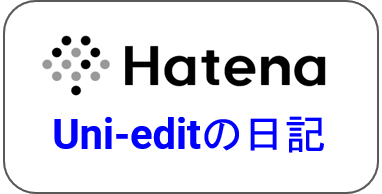難易度:上級
校正チームによれば、英語原稿の校正でよく直さなければならないのが、ハイフンの使い方だそうです。ハイフンを正しく使えるようになると、英文にぐっとこなれた印象が生まれ、込み入った記述もクリアーになります。
ハイフンは、「-」のような形をしたとても短い横棒にすぎませんが、被修飾語を明確にする上で大きな役割を果たし、文意をはっきりとさせます。英語の学術文章では、ハイフンが幅広く用いられます。
ハイフンは、おそらくコンマと並び、 書き手にとって最も悩みの種となる句読点法です。その理由は、ハイフンに類似するものが話し言葉に存在しないからかもしれません。それは、印刷物における必要性からのみ生まれてきたものなのです。ハイフンの本質は、読み手に曖昧さを与えないようにすることにあります。
では、一般的な用法と誤用をいくつか見てみましょう。
ハイフンを使って複合語を作る
(正)the well-known actor (訳:有名な役者)
(誤)the well known actor (訳:調子が良い、知られた役者)
この例では、複合語「well-known」が「actor」を修飾しています。ハイフンは、「well」が修飾するのが 「known」だけであり、「actor」には適用されないことを示します。つまり、俳優は調子が良くて(well)なおかつ知られている(known)、というわけではないのです。
(正)the out-of-date curriculum (訳:時代遅れのカリキュラム)
(正)short-term solution (訳:短期的な解決策)
ハイフンを使って修飾関係を明らかにする
(正)He is a small-businessman. (訳:彼は中小企業のオーナーだ。)
(誤)He is a small businessman. (訳:彼は小さいビジネスマンだ 。)
この例では、小さいのが企業(business)であって、男の身長ではないことを示すために、ハイフンが必要になります。もう一つの例を見てみましょう。この例では、両方とも正しいのですが、それぞれ違った意味になります。
(正)A light-green suitcase is pale in color. (訳:薄緑色のスーツケースは淡い色合いである。)
ここではスーツケースの色が記述されています。
(正) A light green suitcase is not heavy. (訳:軽い緑色のスーツケースは重くない。)
この文では、スーツケースは軽く、かつ緑色をしています。
アイコンをクリックして、ヒントをダウンロードする:  ハイフンの正しい使い方(パートA)
ハイフンの正しい使い方(パートA)
Uni-edit English Writing Tip: How to use hyphens correctly (Part A)
Level of difficulty: Advanced
Editors at Uni-edit often need to correct the use of hyphens during English editing of manuscripts. Correct use of hyphens shows the author's advanced command of English and helps to make detailed descriptions clear.
The hyphen, which is a very short horizontal line that looks like this '-', is very helpful to disambiguate modified words, which will make your writing clearer. Hyphens are used often in all academic writing in English.
Hyphens cause writers more trouble than any other form of punctuation, except perhaps commas. This may be because the hyphen has no analogue in speech; it is punctuation created purely by the needs of print. The point of the hyphen is to avoid ambiguity for the reader.
Let's look at some common uses and misuses:
Create a compound word using a hyphen
Correct: the well-known actor
Incorrect: the well known actor
In this example, 'well-known' is a compound word that modifies 'actor'. The hyphen indicates that the 'well' applies to only the 'known' and does not apply to the 'actor'. That is, it is the actor is not both well and known.
Correct: the out-of-date curriculum
Correct: short-term solution
Make the modification clear using a hyphen
Correct: He is a small-businessman.
Incorrect: He is a small businessman.
Above, to indicate that it is the business that is small, and not the man who is small, we need the hyphen. Below is another example, where both situations are correct but have different meanings.
Correct: A light-green suitcase is pale in color.
Here the suitcase's color is described.
Correct: A light green suitcase is not heavy.
Here the suitcase is both light in weight and is green.
END OF TIP



